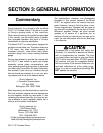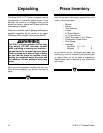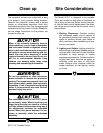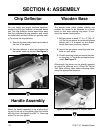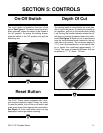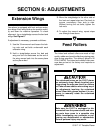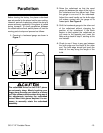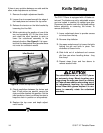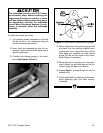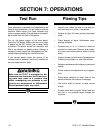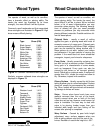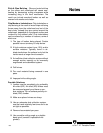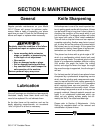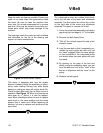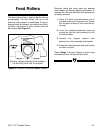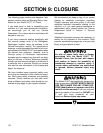
-18- G1017 12'' Portable Planer
Pitch & Glue Build-up - Glue and resin build-up
on the rollers and cutterhead will cause over-
heating by decreasing cutting sharpness while
increasing drag in the feed mechanism. The
result can include scorched lumber as well as
uneven knife marks and chatter.
Chip Marks or Indentations- Chip indentation or
chip bruising is the result of wood chips not being
thrown away from the cutterhead and out of the
dust chute. Instead they are carried around the
cutterhead, deposited on the planed surface and
crushed by the outfeed roller. Chip indentations
can be caused by a number of reasons, some of
which are:
1. The type of lumber being planed. Certain
species have a tendency to chip bruise.
2. A high moisture content (over 15%) and/or
surface moisture. Typically found in air-
dried stock where the surface is dry but the
inside needs a longer time to season.
3. An inefficient dust collection system without
enough suction capacity or an incorrectly
engineered and assembled system.
4. Dull knives.
5. Too much material being removed in one
pass.
6. Improper knife cutting angle.
Possible Solutions:
1. Lumber must be completely dry, preferably
kiln-dried (KD). Air-dried (AD) lumber must
be seasoned properly and have no sur-
face moisture. Do not surface partially-air-
dried (PAD) lumber.
2. Make sure planer knives are sharp.
3. Use an adequate dust collection system,
one that uses relatively few turns and is as
air tight as possible.
4. Remove less material per pass.
5. Use a smaller cutting angle or a double
bevel grind (consult a reputable knife
grinder).
Notes



